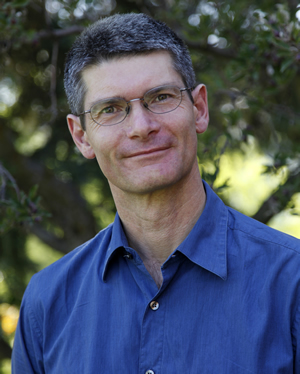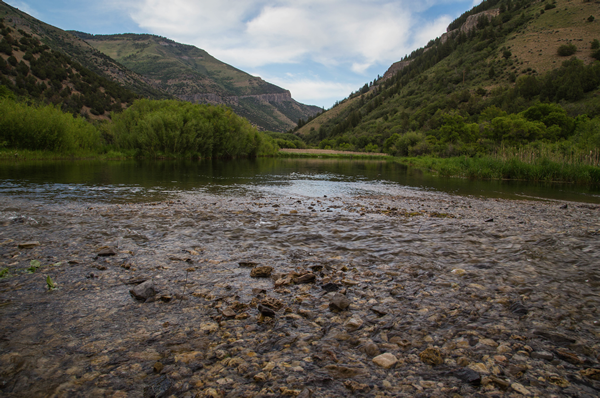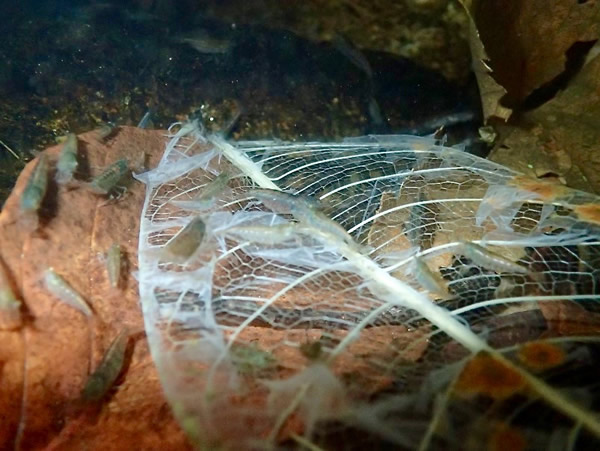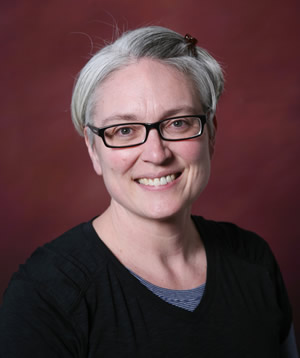Research News
May 3, 2017
Climate Change Book Initiates Discussion

iUTAH researcher Dan Bedford was featured in a recent news story titled “Weber State professors respond to climate misinformation spun by recent book.” The article appeared in the April 24 edition of the Standard Examiner. Bedford was one of three faculty members asked to respond to a book questioning the scientific consensus on climate change. Here’s a short excerpt below:
“The book, titled “Why Scientists Disagree About Global Warming,” was published by the Heartland Institute. It claims what its title suggests, despite the fact that 90 to 100 percent of climate scientists agree climate change is real, human-caused and warming the planet at an alarming rate. The Heartland Institute is a nonprofit think tank with funding ties to fossil fuel industries…. The book attempts to debunk studies finding consensus among scientists about human-caused climate change and discredit findings by the Intergovernmental Panel on Climate Change, or IPCC.
Dan Bedford, a geography professor at Weber State, also received a copy of the Heartland Institute book. ‘My reaction to seeing this book is rather mixed,’ he said. ‘On the one hand, the whole idea of disseminating misinformation on a large scale about any scientific topic … that’s fundamentally problematic. I was upset about that.’ ”
May 2, 2017
Presentation on GAMUT at Water Commission Meeting
iUTAH data manager Amber Jones gave a presentation at the biannual Bear River Commission Water Quality Committee meeting held in Salt Lake City on April 10. In attendance were leadership and personnel from water quality agencies in Utah, Idaho and Wyoming, including state and federal offices, private interest groups, and public utilities, focused on the Bear River Basin. The committee was interested in learning about iUTAH’s water quality monitoring and research.
The iUTAH project was invited to the meeting because of the committee’s interest in the water quality data collected as part of the ‘Gradients Along Mountain to Urban Transitions’ GAMUT network. Jones discussed GAMUT and the tools, infrastructure, and processes used for data management and quality control. Participants included “scientists, regulators, and interested citizens interested in exchanging information and expertise,” said Jones. “It was an excellent opportunity to interact with water quality professionals and interested parties and to apprise state agencies about the work being done as part of iUTAH. “
Bear River Commission Water Quality Committee meets twice annually as part of its efforts to inform and educate its members on technical and policy expertise regionally in connection with water quality. They also host the Bear River Watershed Information System website.

April 25, 2017
Mystery of the Missing Mercury at the Great Salt Lake

Westminster College and iUTAH researcher Frank Black has been in the news for his contributions to research on the changes in the toxic methylmercury levels in deep waters of Utah’s Great Salt Lake, between 2010 and 2015. The story, conducted in collaboration with a team of 10 scientists from the University of Utah, Westminster College, and Utah Department of Natural Resources, came out in a paper published April 12 in Environmental Science & Technology.
A media release provided by the University of Utah’s science writer Paul Gabrielsen said the “disappearance of the mercury was not due to aggressive environmental policies or a wide-ranging cleanup effort. Instead, it’s part of a story involving a large-scale unplanned chemistry experiment, a sometimes-stinky lake, and ducks – in which the mercury did not disappear…. A Union Pacific railway line crosses the lake, dividing it into a smaller north arm and a larger south arm, with the line drawn right at the base of the bunny-ear-like northern extensions of the lake. Because the north arm has no major river inflow, it’s much saltier than the south arm. Two culverts in the railroad line allowed briny north arm water to flow into the south arm and, because of its higher density, sink to the bottom of the south arm.”
“The difference in density between the deep and shallow waters prevented mixing, says (University of Utah) geology and geophysics professor William Johnson, and kept fresh oxygen from infiltrating into the deeper water layers. Decaying organic matter on the lake floor sucked all the oxygen out of the briny layer, forcing microorganisms to find something else to “breathe.” Without oxygen, some bacteria turn to nitrate to fuel the chemical processes of life. When the nitrate is gone, they turn to iron, manganese, and finally sulfate. Residents of the Salt Lake Valley may have noticed a byproduct of the sulfate-breathing bacteria – sulfide, a stinky rotten egg smell emanating from the lake. In another side effect, the bacteria turn elemental mercury into toxic methylmercury.”
Research on this study was funded by iUTAH through two Research Catalyst Grants in 2014 and 2017. Black’s current funding award builds upon his earlier work on the Great Salt Lake by examining wildfire ash and GSL dust as sources of heavy metals to Utah’s aquatic ecosystems. RCG funding supports a collaborative culture of multi-institutional research, encouraging primarily undergraduate institutions such as Westminster College, to involve themselves and their students in current science research. Chris Mansfield, a recent graduate of Westminster College and one of Black’s students, was involved in the team that published the study.
The study can be found in its entirety here.
Press: UNews | Phys.org | Science Newsline | ScienceAlert

April 5, 2017
What Climate Change Means for Leaf Litter

University of Utah and iUTAH researcher Jennifer J. Follstad Shah has been in the news for her contributions to research on leaf litter breakdown in streams and rivers, conducted in collaboration with a team of 15 scientists in the U.S. and Europe. The study “Global synthesis of the temperature sensitivity of leaf litter breakdown in streams and rivers” was published Feb. 28 in Global Change Biology.
An excerpt from the Phy.org story said “carbon dioxide coming from some of Earth's tiniest residents may not be increasing as quickly as some believed in the face of global climate change. Streams and rivers are home to insects, bacteria and fungi that consume plant litter, including fallen leaves, and break it into smaller pieces. This type of litter is good for streams and rivers because it helps remove toxins. As leaf litter is consumed, insects and microbes get oxygen, convert nutrients into energy and release carbon dioxide into the atmosphere. This process is what scientists call leaf litter decay.”
“The process is not as obvious as the melting of ice caps and impacts on a charismatic creature like the polar bear, but it is an important indicator of global climate change,“ Follstad Shah said, and one that has implications for values used in climate change models. “There is still a lot about the carbon cycle we don’t understand,” she said. “Understanding the temperature sensitivity of ecosystem processes that govern carbon cycling is imperative as global temperatures rise.”
Jennifer is currently working with data samples from seven iUTAH GAMUT sites along the Logan, Red Butte, and Provo rivers. While the data in this study does not come from the GAMUT sites, she says that it does relate since the results from both studies can be used towards developing indicators of stream health. Data and analysis from her GAMUT site studies will be available later this year.
Led by the Follstad Shah, the full study is available here.
Press: PHYS.ORG | Science Daily | UU News | Youth Health Magazine

March 22, 2017
SUU Professor Receives Award to Fund Water Research

Southern Utah University and iUTAH researcher Jacqualine Grant was featured in the news for her iUTAH release time award. An excerpt from the news story said “Grant will use this break from campus duties to develop proposals with colleagues in the Intermountain West.”
Grant said in the SUU news story “ ’I am very grateful to have received this award from iUTAH’…. The course release time has facilitated proposal development with SUU colleague Dr. Matt Ogburn, collaborators at the Society for Conservation Biology, and researchers at the University of Utah and Northern Arizona University. ‘Our goal is to advance science related to water conservation and green infrastructure; and to increase undergraduate participation in authentic research experiences.’
Because of the release time award from iUTAH, one of Grant's proposals has already received funding from the Bureau of Land Management’s Colorado Plateau Native Plant Program. This grant will fund the hiring of two SUU students to work on green infrastructure research and seed diversity projects alongside Grant and Ogburn.”
Press: SUU University News


